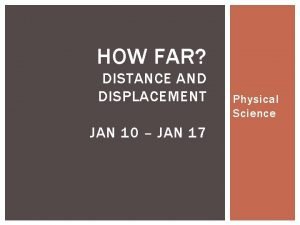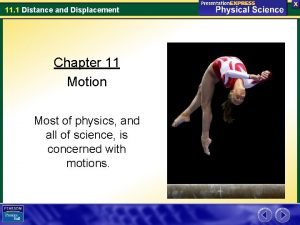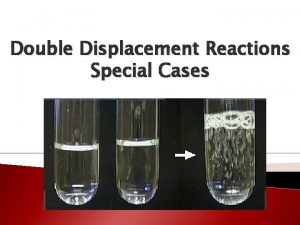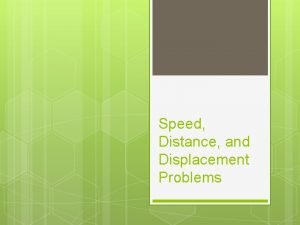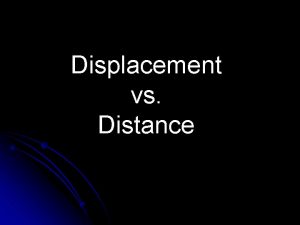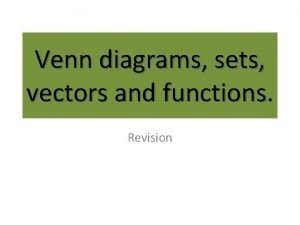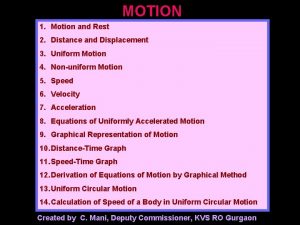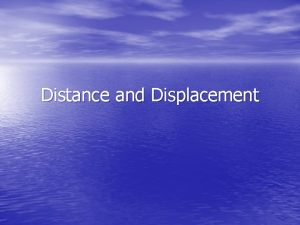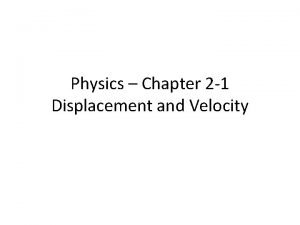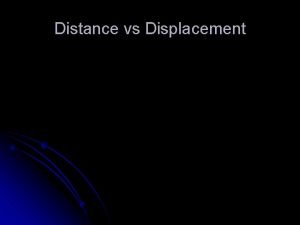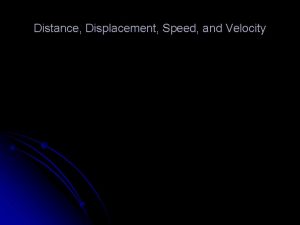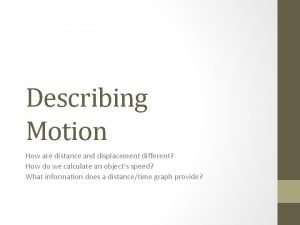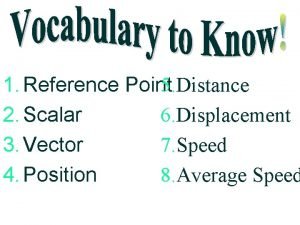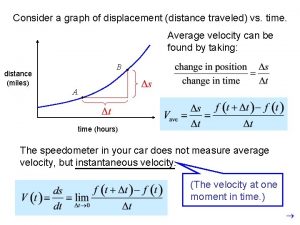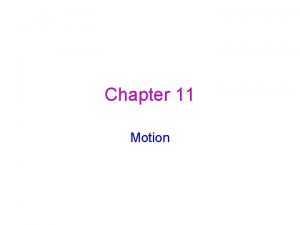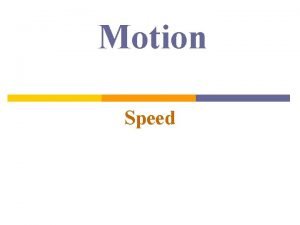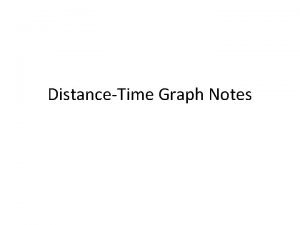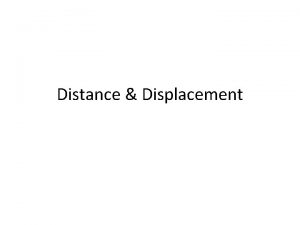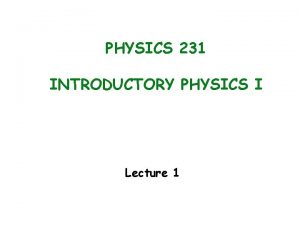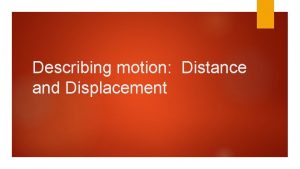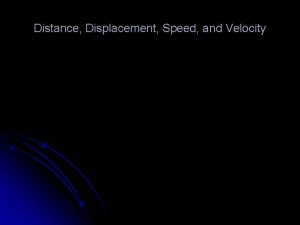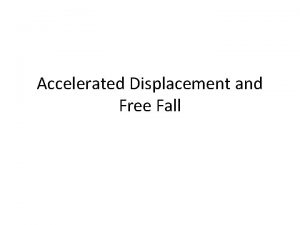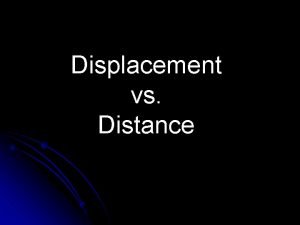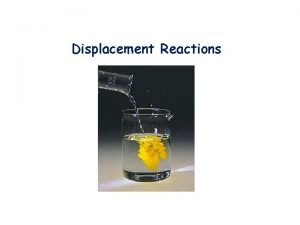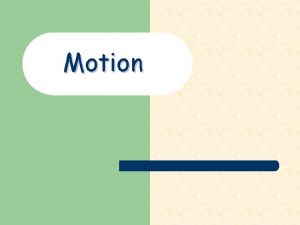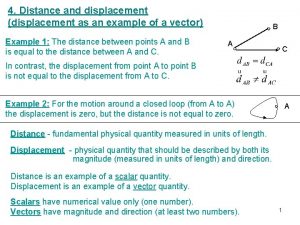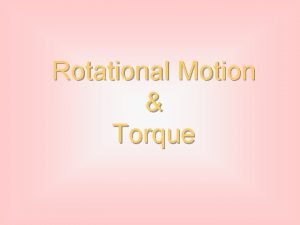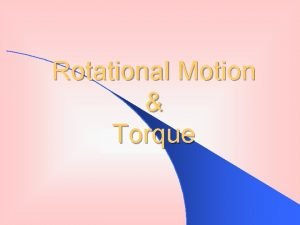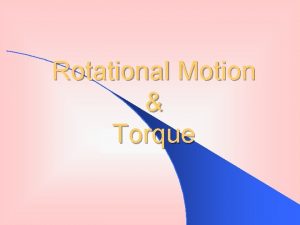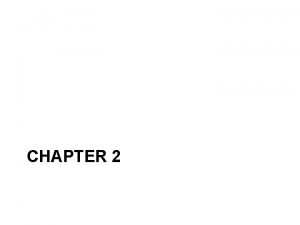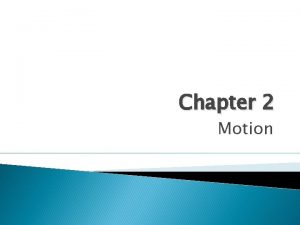11 1 Distance and Displacement Chapter 11 Motion



















- Slides: 19

11. 1 Distance and Displacement Chapter 11 Motion Most of physics, and all of science, is concerned with motions.

11. 1 Distance and Displacement Key Concepts • What is needed to describe motion completely? • How are distance and displacement different? • How do you add displacement?

11. 1 Distance and Displacement To describe motion, you must direction state the _______ the object is moving as well as how ________ the object is fast moving. You must also tell its location ________ at a certain time.

11. 1 Distance and Displacement Choosing a Frame of Reference To describe motion accurately and frame completely, a _______ of _________ is necessary. reference A frame of reference is a system of objects that not are ____ moving with respect to one another.

11. 1 Distance and Displacement Choosing a Frame of Reference How Fast Are You Moving? _________ motion is Relative movement in relation to a frame of reference. • For example, as a train moves past a platform, people standing on the platform will see those on the train ________ by. speeding

11. 1 Distance and Displacement Choosing a Frame of Reference sitting on But to someone _______ a speeding train, others on the train don’t seem to be moving.

11. 1 Distance and Displacement Choosing a Frame of Reference Which Frame Should You Choose? meaningful • Choosing a __________ frame of reference allows you to describe motion in a clear and relevant manner. – When you sit on a train and look out a window, a treetop ________ may help you see how fast you are moving relative to the _______ ground – If you get up and walk toward the rear of the train, seat looking at a _______ shows how fast you are train walking relative to the _______.

11. 1 Distance and Displacement Measuring Distance is the ______ of the _____ length path between two points. Displacement is the ________ from direction the starting point and the length of a ______ line from the starting point to the straight ending point.

11. 1 Distance and Displacement Measuring Distance • The SI unit for measuring distance is the meter (m) ________ • For very large distances, it is more common to make measurements in _________. kilometers (km) • Distances that are smaller than a meter are centimeters (cm) measured in __________.

11. 1 Distance and Displacement • Think of a roller coaster track…the distance traveled is path the ____ of the roller coaster

11. 1 Distance and Displacement Measuring Displacements • Displacement is the direction from the ______ point to the starting ____ and the length end straight of the ______ line between them. • After completing a trip around the track, the car’s displacement is _______. zero

11. 1 Distance and Displacement Combining Displacements Adding displacements uses _______ vector addition. magnitude A vector is a quantity that has ______ and _________. direction – magnitude can be _______, or size length amount _______ arrows – vectors are represented on a map with _____

11. 1 Distance and Displacement Along a Straight Line A. Add the magnitudes of two displacement same vectors that have the ______ direction. B. Two displacement vectors with opposite subtracted directions are _______ from each other.

11. 1 Distance and Displacement That Isn’t Along a Straight Path • The total distance traveled in the map is shown by the yellow vector lines…the distance adds up to 7 ______ blocks N S W E

11. 1 Distance and Displacement That Isn’t Along a Straight Path Measuring the ________ resultant ________ , vector represented by the red arrow, shows that the displacement is two blocks less than the distance he actually traveled. Displacement = 5 blocks NE N S W E

11. 1 Distance and Displacement Assessment Questions 1. A car is driving down the highway. From which frame of reference does it appear to not be moving? a. standing at the side of the road b. a car driving at the same speed but going the opposite direction c. sitting inside the car d. A helicopter flying overhead

11. 1 Distance and Displacement Assessment Questions 2. The SI unit of distance that would be most appropriate for measuring a larger distance between two cities is the a. b. c. d. meter. centimeter. kilometer. mile.

11. 1 Distance and Displacement Assessment Questions 3. If you walk across town, taking many turns, your displacement is the a. total distance that you traveled. b. distance and direction of a straight line from your starting point to your ending point. c. distance in a straight line from your starting point to your ending point. d. direction from your starting point to your ending point.

11. 1 Distance and Displacement Assessment Questions 4. You travel 30 km west of your home and then turn around and start going back home. After traveling 10 km east, what is your displacement from your home? a. b. c. d. 20 km west 40 km west
 What is the difference of distance and displacement
What is the difference of distance and displacement 11.1 distance and displacement
11.1 distance and displacement Single displacement vs double displacement
Single displacement vs double displacement Distance and displacement problems
Distance and displacement problems Distance vs displacement
Distance vs displacement Venn diagram of vector and scalar
Venn diagram of vector and scalar Equation of motion graphically
Equation of motion graphically Distance vs displacement
Distance vs displacement Displacement formula distance
Displacement formula distance Distance vs displacement
Distance vs displacement Distance vs displacement
Distance vs displacement How is distance different from displacement
How is distance different from displacement Is distance a scalar quantity
Is distance a scalar quantity Displacement is distance combined with
Displacement is distance combined with Displacement vs distance traveled
Displacement vs distance traveled What is needed to describe motion completely
What is needed to describe motion completely Distance vs displacement
Distance vs displacement Distance vs displacement
Distance vs displacement Distance is a scalar
Distance is a scalar Distance vs. displacement
Distance vs. displacement
